Olympic Memory Marathon: Part 3 - My Olympic memory
On November 7th I took part in the Olympic Memory Marathon, a video project by artist Simon Pope capturing 104 Londoners talking about their experience of the Olympics, whilst he walked the length of a marathon through the streets of the boroughs hosting the 2012 games. These are the memories that I related to him.
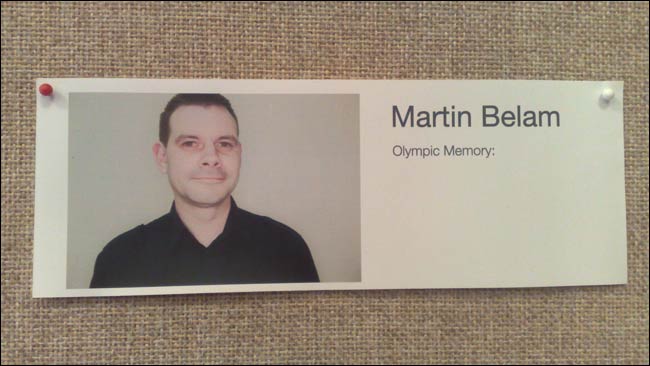
I've never been lucky enough to go to an Olympics, but I have visited several of the stadiums where the games have been held. I've visited the Olympiastadion in Berlin, after the stadium had been refurbished ready for the 2006 World Cup, and I've been to the Olympic Stadium in Barcelona twice, once to see Espanyol play, and once to visit the botanical gardens on Montjuïc.
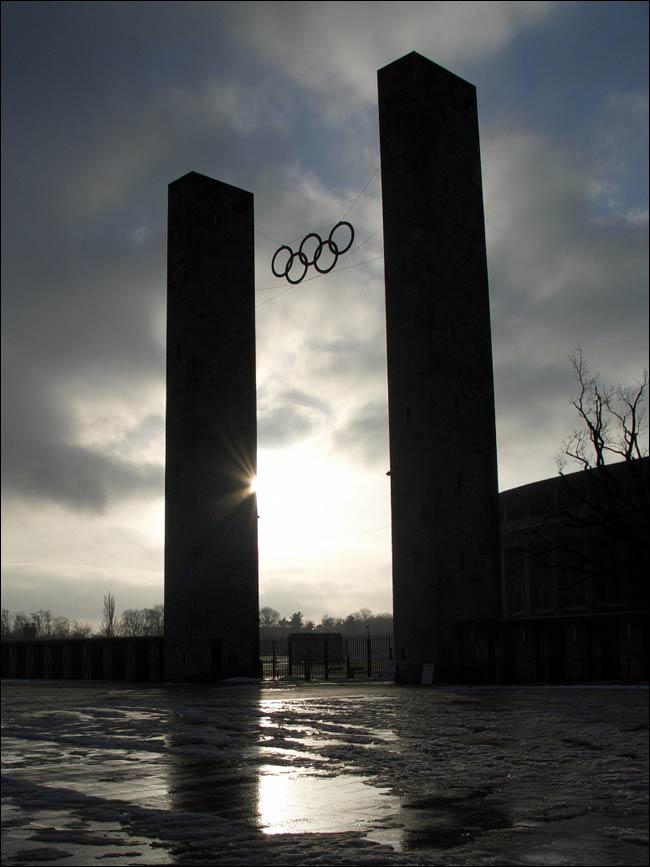
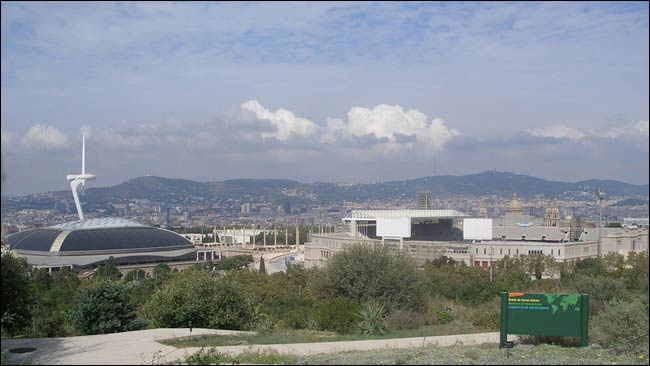
However, I lived on Crete for 3 years, which meant quite a few trips through Athens, and so I've visited some of the Greek sites associated with the earliest revival of the Olympic Games. On one of our stays in Athens we got a last minute hotel deal to stay at the Baby Grand, a hotel where many of the rooms have been customised by graffiti artists.
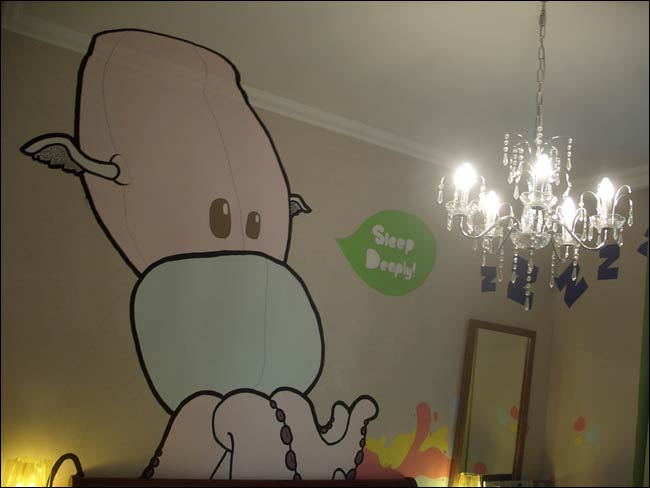
It was well out of usual price league, and so the breakfast on offer was much more than we wanted to pay. Instead, each morning we headed down the street to Platia Kotzia. It is an unremarkable square in Athens, near the main tourist district. Buildings flank it on three sides with an impressive neo-classical facade at the far end, but it is basically an open paved area filled with not much more than pigeons. We used to sit in the morning with our maps and tourist books planning the day ahead, sipping on the hot Nescafé which was a lot cheaper than staying for a coffee in the hotel. There is a περιπτερο on the corner selling cigarettes and newspapers, and a small pet shop, attracting a steady stream of kids looking through the window at the animals inside.
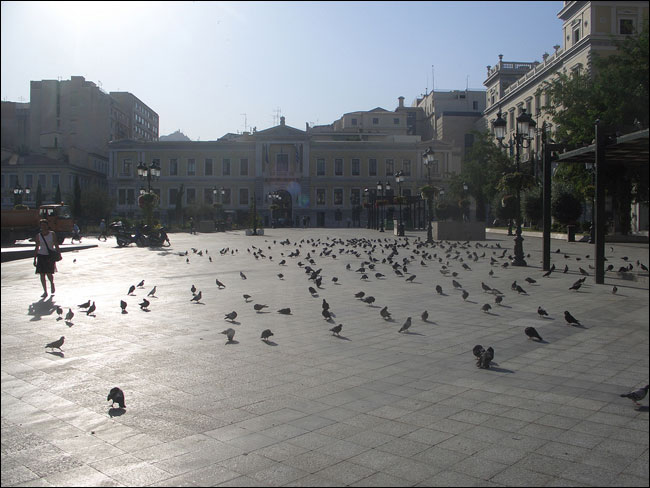
Although there wasn't anything special to mark it out, what makes the square unique is that it was the venue for the 1859 Olympic Games. This was well before the start of the official Olympic Games, but it was the first attempt by Evangelis Zappas to revive the concept. Athletes from Greece and the Ottoman Empire competed there 150 years ago as a prototype of the format the Games would eventually take.
It wasn't the only Olympic venue in Athens we visited. We never actually got inside the stadium built for the 2004 Games, only passing it occasionally when making an interchange on the Athens Metro.
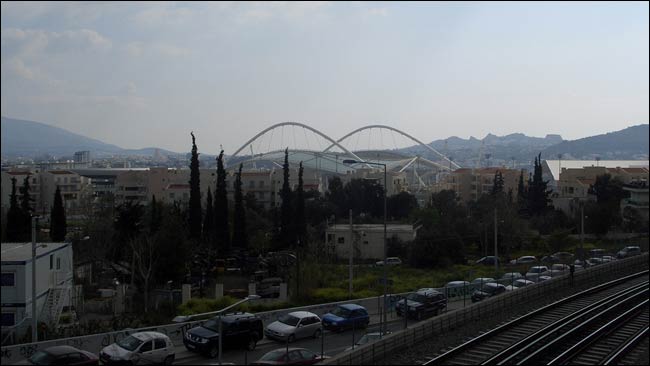
We did, though, walk past a venue used in 1896. We'd been looking for a particularly well recommended bar, where you could sip cocktails whilst watching the Athens sunset. However, we got there a bit early, and not only wasn't it open, but the attitude of the staff getting it ready made it clear that when it did open they were expecting more in the way of Athens socialites than sweaty British tourists, so we made a new plan.
We spent the sunset walking through the park back towards Syntagma Square, and stumbled upon The Zappeion. An imposing building with yellow walls and white classical styled columns, The Zappeion was the very first purpose-built Olympic venue. It was used at the 1st Olympiad in 1896 for the fencing, and as the media centre for the 2004 games. It was named after Evangelis Zappas, who had worked so hard to get the Games restored.
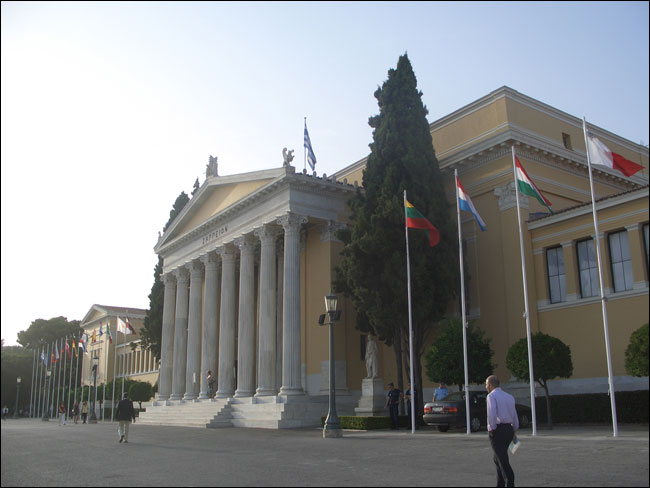
Again, like Platia Kotzia, there was nothing in particular outside the building to mark it out as a site of Olympic historical interest.
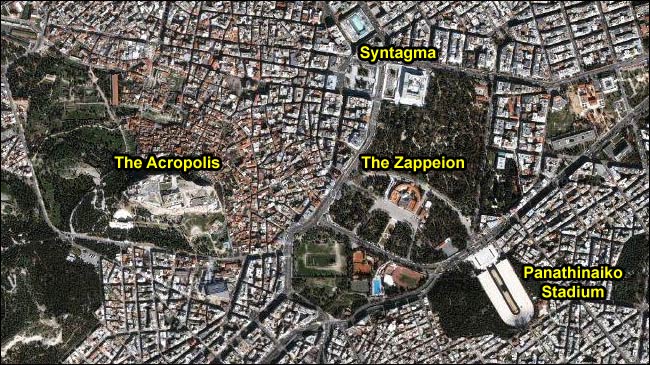
This made a big contrast with a historic Olympic venue that I used to visit nearly daily. For around a year I worked in a BBC office in White City which was built on the site of the "The Great Stadium, Shepherd's Bush". This had hosted the first London Olympics in 1908. As you approached the office complex an Olympic flag flew, and on the side of the walls of one of the buildings there was a large plaque commemorating the event.
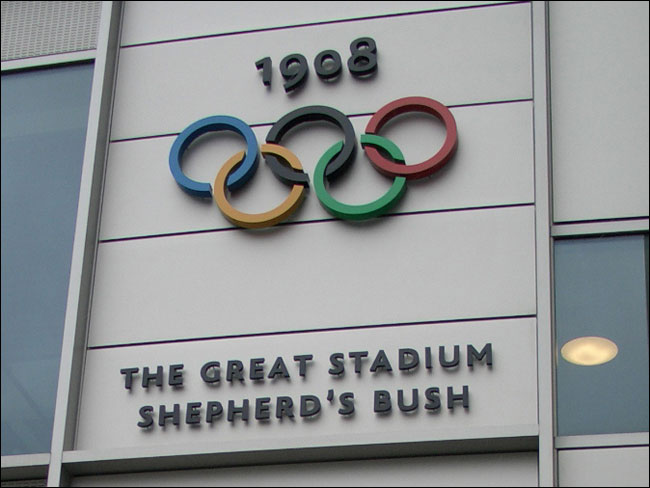
The plaque features the Olympic rings, which are in fact anachronistic as they were not designed until 1912, and were not adopted until the 1920 Antwerp Games. There is also a medal table for the event up on the wall. It was interesting to note that, as well as the unlikely sight of Great Britain topping the medal table, there were entries from geographical entities like 'Australasia' and 'Bohemia', who no longer compete in the Olympics.
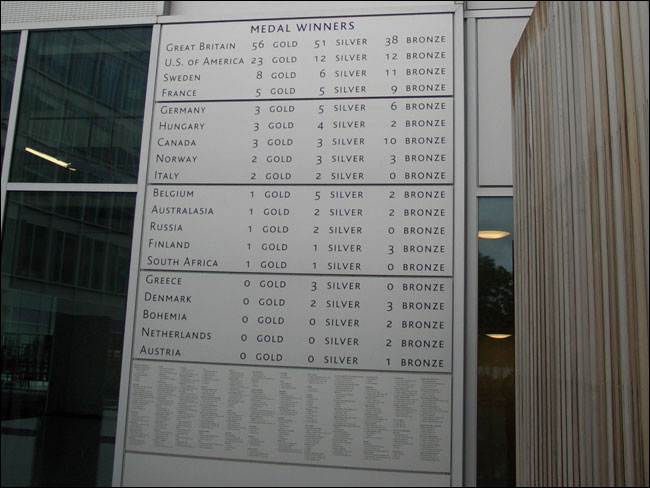
In front of the plaque there is another reminder of the stadium. Set into the paving stones is a thin strip of metal, alongside a small sign stating that this marks the finish line of the original track used in the 1908 Olympics. It was a really interesting way of bringing back to life a stadium that had survived until 1985, hosting rugby league, speedway and even one of the matches of the 1966 World Cup Finals.
Sometimes, if I thought nobody was looking, on my way to work I'd cross the 1908 Olympic finish line, running in a slow-motion 'Chariots Of Fire' style...
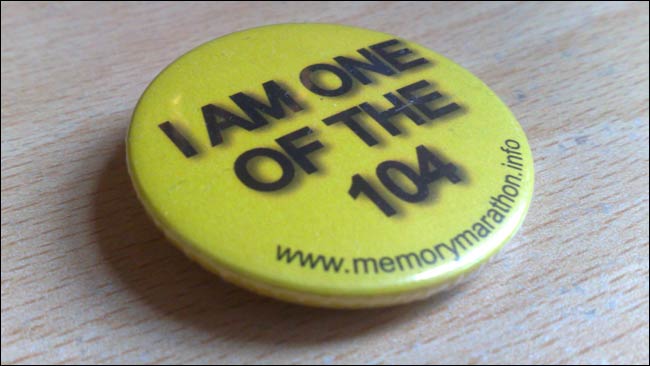
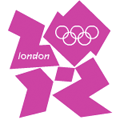
The Olympics have always stood for a place where people of any background, race, creed, or color can come together and compete to the greatest of their abilities in the most pure sense. While occasionally marked with Tragedy, such as during the 1972 Summer Olympics, when 11 Israeli athletes were killed by Palestinian extremists, or when Jesse Owens, at the time, the fastest man in the world, was denied medals by Hitler, still, the Olympic spirit lives on. The empty stadiums will never truly feel empty, and are an enduring testament to the human spirit and the spirit of the Olympics, much like remaining ruins of ancient Greece where the games began so long ago.
I hesitate to shatter your illusions about your kind remarks about the BBC White City olympic memorial - the launch event of which I was vaguely involved - but rumour has it that we had to slightly alter the exact location of the finishing line of the Great Stadium. Is it not suspiciously convenient that the finishing line is located at one of the open spaces at White City, rather than underneath one of the three buildings? I came across some great stories while researching the 1908 Olympics though, including the Italian shopkeeper who won the marathon, stumbling over the finishing line.
"La la la I've got my fingers in my ears I can't hear you Katharine so you can't shatter my illusions" ;-)
The 1908 Olympics did have some great stories. The whole American tradition of not dipping their flag is because they refused to do it in 1908 because we'd forgotten to put a Stars'n'Stripes up in the stadium. The Swedish team also flounced out of the opening ceremony because they didn't have a flag on display...
Justin, there is a lot of nonsense spouted about Jesse Owens and Hitler in 1936, and you appear to have fallen for some of it. Hitler didn't have any power to withhold medals from athletes, and whilst it is true that he didn't shake Owens' hand, he didn't shake the hand of any medal winners after the first day, after he was told not to by the Olympic organisers as it showed partisanship. Jesse Owens himself said: "Hitler didn't snub me—it was FDR who snubbed me. The president didn't even send me a telegram"